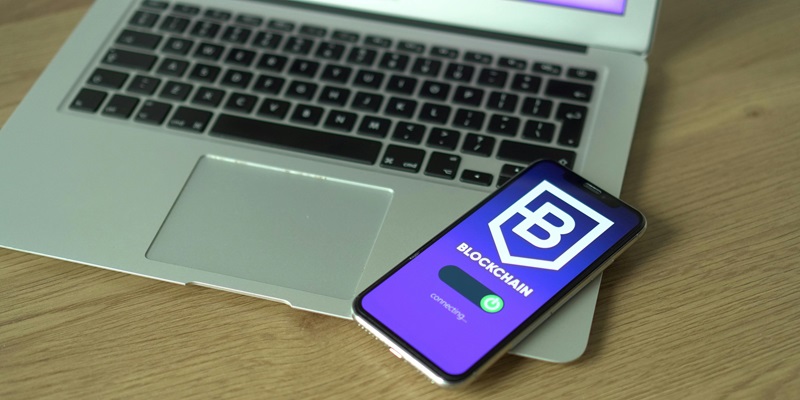In the latest strides towards enhanced network efficiency and overall ecosystem performance, the team behind the TON blockchain has unveiled significant updates in versions v2024.10 and FunC 0.4.5. These updates address several technical challenges such as scalability, synchronization speed, and garbage collection, which have long been areas of focus for the development team. By strategically targeting these issues, the updates aim to foster a more robust and reliable blockchain environment. One of the updates’ notable features includes the improvement of systems with slower disk speeds, making the network more efficient and responsive over time. This could mark a significant milestone for the TON blockchain, as it promises streamlined operations and optimized resource utilization through better network traffic management by reducing data transmission across the network.
An essential component of these updates is the enhancements made to the synchronization process. Synchronization speed is vital for blockchain networks, ensuring that nodes remain updated with the most recent data efficiently. By refining this process, the development team aims to minimize latency and bolster overall network performance. Another crucial aspect is garbage collection, which involves the deletion of unnecessary data stored in the system, freeing up space and enhancing speed. This update sees improvements in how garbage collection is managed, which will likely increase the system’s efficiency and reliability. The impact of these improvements on channel operations and lookup processes for Distributed Hash Tables (DHT) can significantly enhance network responsiveness, benefiting users by providing faster and more reliable access to blockchain data.
Technical Enhancements and Impact on Ecosystem
The recent updates to the FunC language, specifically version 0.4.5, play a pivotal role in achieving the blockchain’s technical goals. FunC is crucial for the TON blockchain, facilitating various operations by providing a coding framework that developers rely upon. The updates include fixes that enhance the language’s execution accuracy and correctness, which is essential for maintaining the system’s reliability. These modifications are expected to improve the efficiency of the TON Virtual Machine (TVM). Changes made to the TVM are oriented towards increasing the network’s functionality, ensuring smoother and more effective operations across the board.
In addition to the technical upgrades, the TON team’s efforts aim to create a more optimized and scalable network. Scalability remains one of the most formidable challenges in blockchain technology, as networks must handle an ever-increasing number of transactions and users without compromising performance. The TON blockchain’s updates are designed to improve how resources are utilized, potentially reducing the strain on the network and paving the way for more extensive adoption. Optimizing resource use is particularly crucial for complex operations like those managed by TON, which include various applications such as the Telegram Tap-2-Earn (T2E) game economy involving cryptocurrencies like Notcoin and Hamster Kombat.
Market Performance and Future Outlook
Despite the promising technical enhancements introduced with v2024.10 and FunC 0.4.5, the TON cryptocurrency’s market performance has remained bearish. As of the latest data, the price of TON stands at $4.88, reflecting a 0.99% drop in the past 24 hours and a 4.72% decline over the previous week. Over the past month, TON’s value has dropped by 10.15%, indicating a prolonged bearish trend. However, trading volume has shown signs of resilience, with a slight increase of 1.29% to $168.5 million, suggesting that investors are still engaged with the TON ecosystem. Analysts have maintained an optimistic outlook, speculating that the token could potentially rise to $20 due to an increasing number of token holders and positive market developments.
Historically, the TON token achieved significant levels, once surpassing $8. However, the arrest and detention of Telegram founder Pavel Durov in France significantly affected its price, highlighting the close correlation between Telegram’s fortunes and the TON blockchain’s performance. Despite the downturn, user engagement with the TON network remains robust, underscored by the more than 1 billion transactions processed in early September. This level of activity demonstrates strong user interest and reliance on the network, which could bode well for future recovery and growth.
Conclusion
The TON blockchain team has rolled out pivotal updates in versions v2024.10 and FunC 0.4.5, marking significant progress in network efficiency and ecosystem performance. These updates tackle major technical challenges such as scalability, synchronization speed, and garbage collection. Addressing these areas, the updates aim to create a more robust and reliable blockchain ecosystem. One highlight is the enhancement of systems with slower disk speeds, making the entire network more responsive and efficient over time. This improvement promises streamlined operations, optimized resource utilization, and better network traffic management by reducing data transmission.
A key component of these updates is the improvement in the synchronization process. Synchronization speed is crucial for blockchain networks, as it ensures nodes are promptly updated with the latest data. By refining this process, the development team aims to decrease latency and enhance overall network performance. Additionally, the update brings advancements to garbage collection, which involves removing unneeded data from the system to free up space and boost speed. These improvements positively impact channel operations and lookup processes for Distributed Hash Tables (DHT), providing users with faster, more reliable access to blockchain data, thus enhancing network responsiveness and reliability.

